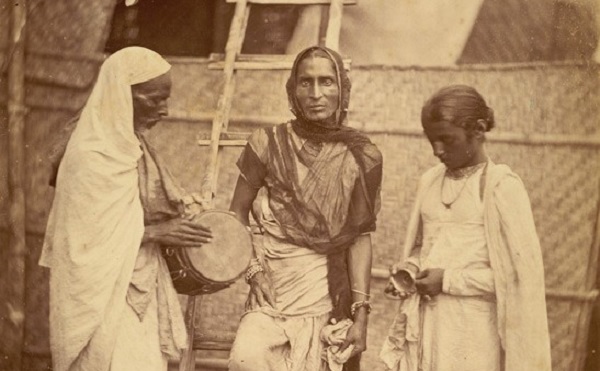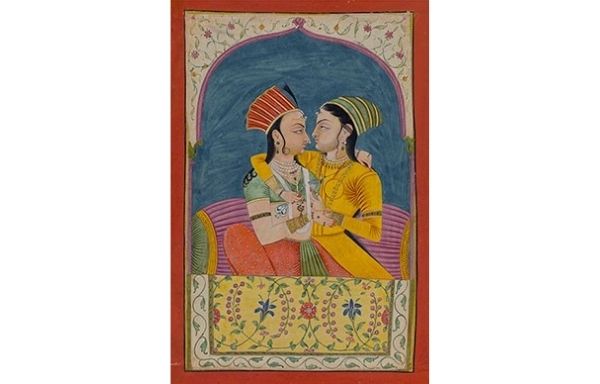
In colonial India, British colonial administrators attempted to legislate on sexual offences. But how, exactly, did British notions of sex crimes interact with indigenous sexual norms? In what ways did British understandings of both Indian sexuality and sex crimes transform such norms? And how did Indians react to such transformations? These are questions that animate my PhD research on sex crimes involving children in colonial India. But how, exactly, did British notions of sex crimes interact with indigenous sexual norms? In what ways did British understandings of both Indian sexuality and sex crimes transform such norms? And how did Indians react to such transformations? These are questions that animate my PhD research on sex crimes involving children in colonial India.
While the British justified the conquest and colonisation of a quarter of the world’s population on the grounds that they were bringing the ‘rule of law’ to peoples who had none, in reality they superimposed an alien legal system upon often complex pre-existing legal norms.
This led to considerable upheaval of, and transformations in, existing socio-cultural norms. When it came to sexuality, for example, the British introduced new understandings of both sexuality and sex crimes, including against children.
Under British rule, the law used to prosecute sex crimes against children depended on the victim’s gender: crimes against girls were prosecuted as rape, while crimes against boys were prosecuted as ‘unnatural offences’. ‘Unnatural offences’ was an umbrella term that included bestiality and sodomy, and was notably used to prosecute male same-sex relations. (Women were not considered capable of committing sexual crime in this period.) But what did ‘rape’ and ‘unnatural offences’ actually mean in a colonial Indian context – for both the colonisers and the colonised? Looking at the law on ‘unnatural offences’ suggests a far more complex history of sexual relations and sexual regulation in South Asia than one might first assume.
There have been some important efforts to recover histories of same-sex relations in South Asia. Whilst some scholars have turned to literary sources to reveal evidence of queer pasts, others have questioned what we even mean by ‘sexuality’ in pre-colonial contexts. Given that Foucault famously argued that the very concept of ‘sexuality’ was a modern European invention, this has had important implications for how historians working on the Global South analyse sexual relations.
'Two princesses in a fond embrace'. Jodhpur, circa 1780, The Tandan Collection
The existence of gender fluidity in South Asia has long been recognised, most notable in khwajaserai and hijra communities (see image below). Historically, such fluidity also characterised sexual relations: given gender itself was fluid, engaging in sexual activity with a someone of a certain gender did not render an individual as a specific sexual ‘type’, i.e. ‘homosexual’. This clashed with British colonial law, which understood ‘sexuality’ as an innate and categorizable human quality. Trials involving men accused of having sex with other men, for example, often characterised the defendant as a ‘habitual sodomite’, a classic sexual ‘type’. Such claims were heavily informed by medical evidence, which asserted that ‘habitual sodomites’ could be identified through bodily examination. Putting the inherent violence of such an act aside, that the ‘habitual sodomite’ did not exist at all in South Asian society raises questions about how this shaped trials. Appreciating the crucial difference between how the British prosecution and Indian defendant understood the very nature of the crime can offer new insights into the nature of law in colonial India. Further, this can reveal how colonialism shaped the way indigenous queer communities understood and represented themselves, both inside and outside the courtroom, and how colonial law contributed to hostility towards same-sex relations in South Asia.

Gurmah, Khunsa, or Hijra, Eastern Bengal. Unknown photographer, 1860s. British Library. Historically, hijra referred to male-born or intersex persons with a feminine gender identity who worked as performers; khwajaserai were eunuch slaves. The former communities still exist in South Asia, and are nowadays referred to by both terms interchangeably. Hijras are often incorrectly referred to as ‘transgender’ in Western discourse; there exists no literal translation of this term in the English language.
Such laws have striking contemporary relevance: in India, colonial sodomy law was only repealed in 2018 and, until 2012, this law was still used to prosecute child sexual abuse cases. Given the resilience of colonial sexual crime laws in the region, scholarly efforts to recover histories of same-sex relations in South Asia are crucial to modern sexual liberation. By giving a historical visibility to same-sex relations, LGBTQIA+ history has been central in challenging heteronormativity. LGBTQIA+ History Month is not only an opportunity to celebrate these achievements, but a chance to reflect and consider new ways of seeking queer pasts. Given the European roots of ‘sexuality’ as a concept, thinking more deeply about how sexual relations have been conceived over time not only promises a more profound understanding of sexual histories in the Global South, but also helps us to rethink how sexuality is constructed across the world today.
Emily Kearon-Warrilow is a PhD student in the Department of History.
Find out more about doing a PhD with the Department of History.
